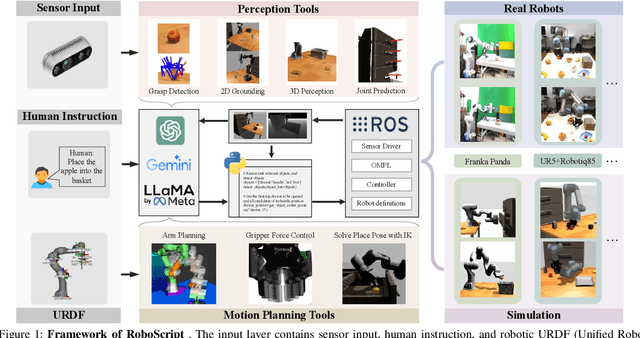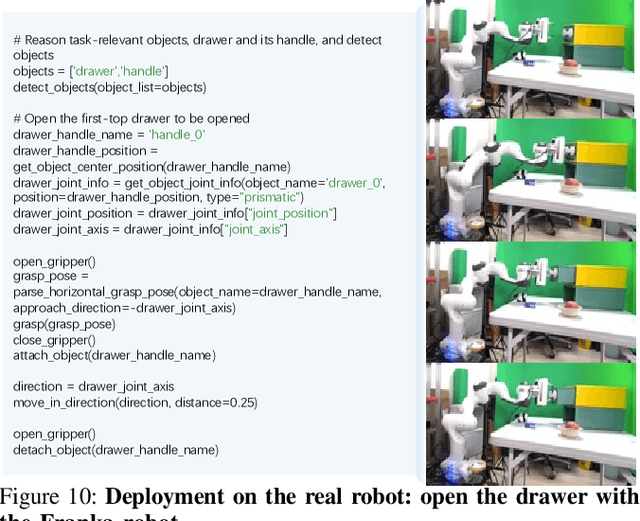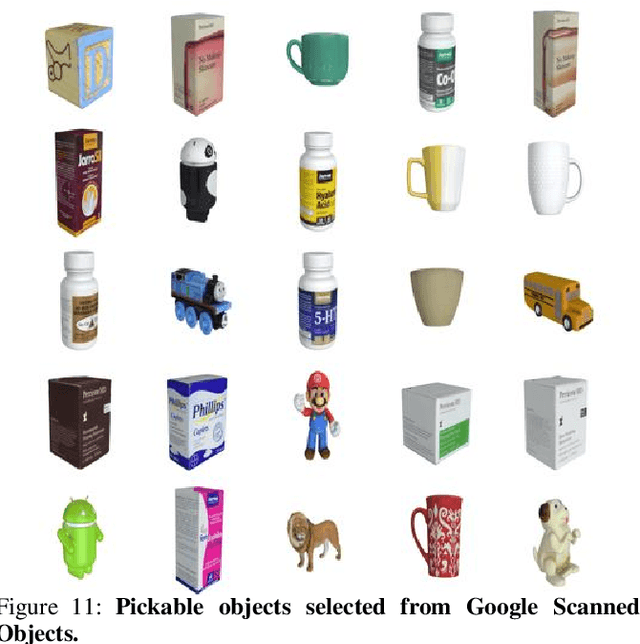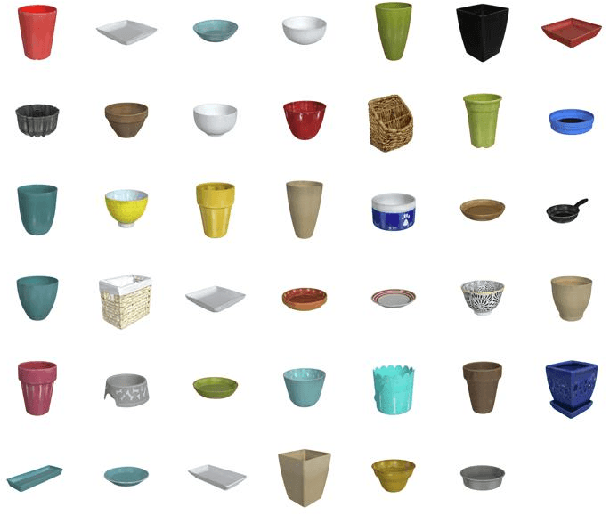Junting Chen
Optimum Noncoherent Detection of Constant-Envelope Signals using Received Signal Magnitudes -- Energy Detection and Amplitude Detection
Feb 25, 2025Abstract:Constant-envelope signals are widely employed in wireless communication systems due to their hardware-friendly design, energy efficiency, and enhanced reliability. However, detecting these signals reliably using simple, power-efficient receivers remains a critical challenge. While coherent detection methods generally offer superior performance, they require complex frequency synchronization, which increases receiver complexity and power consumption. In contrast, noncoherent detection is inherently simpler since it avoids frequency synchronization. However, traditional noncoherent detection approaches still rely on In-phase and Quadrature-phase (IQ) demodulators to extract the noisy received signal magnitudes, and assume the energy detector as the test statistic according to the IQ structure, without rigorous theoretical justification. Motivated by the practical need for robust and low-complexity detection, this paper proposes a comprehensive framework for optimal signal detection using a simple bandpass-filter envelope-detector (BFED) in conjunction with a Bayesian approach and the generalized likelihood ratio test (GLRT) under unknown amplitude conditions. By leveraging approximations of the modified Bessel functions, we derive two distinct regimes of the optimal detector. In the low SNR regime, we rigorously prove that the energy detector emerges as the Bayesian-optimal solution, thereby establishing its theoretical validity for the first time. In the high SNR regime, we derive a novel amplitude-based detector that directly compares the estimated amplitude against the noise standard deviation, leading to a simple yet optimal detection strategy. Numerical simulations validate the theoretical findings, confirming that both the energy and amplitude detectors achieve the minimum error probability in their respective SNR domains.
A Support Vector Approach in Segmented Regression for Map-assisted Non-cooperative Source Localization
Jan 08, 2025Abstract:This paper presents a non-cooperative source localization approach based on received signal strength (RSS) and 2D environment map, considering both line-of-sight (LOS) and non-line-of-sight (NLOS) conditions. Conventional localization methods, e.g., weighted centroid localization (WCL), may perform bad. This paper proposes a segmented regression approach using 2D maps to estimate source location and propagation environment jointly. By leveraging topological information from the 2D maps, a support vector-assisted algorithm is developed to solve the segmented regression problem, separate the LOS and NLOS measurements, and estimate the location of source. The proposed method demonstrates a good localization performance with an improvement of over 30% in localization rooted mean squared error (RMSE) compared to the baseline methods.
$\textbf{EMOS}$: $\textbf{E}$mbodiment-aware Heterogeneous $\textbf{M}$ulti-robot $\textbf{O}$perating $\textbf{S}$ystem with LLM Agents
Oct 30, 2024Abstract:Heterogeneous multi-robot systems (HMRS) have emerged as a powerful approach for tackling complex tasks that single robots cannot manage alone. Current large-language-model-based multi-agent systems (LLM-based MAS) have shown success in areas like software development and operating systems, but applying these systems to robot control presents unique challenges. In particular, the capabilities of each agent in a multi-robot system are inherently tied to the physical composition of the robots, rather than predefined roles. To address this issue, we introduce a novel multi-agent framework designed to enable effective collaboration among heterogeneous robots with varying embodiments and capabilities, along with a new benchmark named Habitat-MAS. One of our key designs is $\textit{Robot Resume}$: Instead of adopting human-designed role play, we propose a self-prompted approach, where agents comprehend robot URDF files and call robot kinematics tools to generate descriptions of their physics capabilities to guide their behavior in task planning and action execution. The Habitat-MAS benchmark is designed to assess how a multi-agent framework handles tasks that require embodiment-aware reasoning, which includes 1) manipulation, 2) perception, 3) navigation, and 4) comprehensive multi-floor object rearrangement. The experimental results indicate that the robot's resume and the hierarchical design of our multi-agent system are essential for the effective operation of the heterogeneous multi-robot system within this intricate problem context.
Radio Map-assisted CSI Tracking with Uncertain Locations in Massive MIMO Networks
Oct 10, 2024



Abstract:Massive multiple-input multiple-output (MIMO) systems offer significant potential to enhance wireless communication performance, yet efficient and accurate channel state information (CSI) tracking remains a key challenge, particularly in dynamic urban settings. To address this, we propose a radio mapassisted framework for CSI tracking and trajectory discovery, relying on sparse channel observations. The radio map is redefined as a mapping from spatial positions to deterministic channel covariance matrices, which captures the complex and time-varying characteristics of urban wireless environments. Leveraging these covariance maps, we develop a CSI tracking method that enables accurate estimation using only single-dimensional observations collected during user movement. Furthermore, we present an efficient algorithm that constructs and continuously refines the radio map through sequential sparse observations, even when location labels are uncertain. Numerical results based on real city maps and ray-tracing MIMO channel datasets show that the proposed framework significantly outperforms baseline methods in both accuracy and adaptability.
CAMON: Cooperative Agents for Multi-Object Navigation with LLM-based Conversations
Jun 30, 2024Abstract:Visual navigation tasks are critical for household service robots. As these tasks become increasingly complex, effective communication and collaboration among multiple robots become imperative to ensure successful completion. In recent years, large language models (LLMs) have exhibited remarkable comprehension and planning abilities in the context of embodied agents. However, their application in household scenarios, specifically in the use of multiple agents collaborating to complete complex navigation tasks through communication, remains unexplored. Therefore, this paper proposes a framework for decentralized multi-agent navigation, leveraging LLM-enabled communication and collaboration. By designing the communication-triggered dynamic leadership organization structure, we achieve faster team consensus with fewer communication instances, leading to better navigation effectiveness and collaborative exploration efficiency. With the proposed novel communication scheme, our framework promises to be conflict-free and robust in multi-object navigation tasks, even when there is a surge in team size.
Energy-modified Leverage Sampling for Radio Map Construction via Matrix Completion
Apr 12, 2024

Abstract:This paper explores an energy-modified leverage sampling strategy for matrix completion in radio map construction. The main goal is to address potential identifiability issues in matrix completion with sparse observations by using a probabilistic sampling approach. Although conventional leverage sampling is commonly employed for designing sampling patterns, it often assigns high sampling probability to locations with low received signal strength (RSS) values, leading to a low sampling efficiency. Theoretical analysis demonstrates that the leverage score produces pseudo images of sources, and in the regions around the source locations, the leverage probability is asymptotically consistent with the RSS. Based on this finding, an energy-modified leverage probability-based sampling strategy is investigated for efficient sampling. Numerical demonstrations indicate that the proposed sampling strategy can decrease the normalized mean squared error (NMSE) of radio map construction by more than 10% for both matrix completion and interpolation-assisted matrix completion schemes, compared to conventional methods.
Diffraction and Scattering Aware Radio Map and Environment Reconstruction using Geometry Model-Assisted Deep Learning
Mar 01, 2024Abstract:Machine learning (ML) facilitates rapid channel modeling for 5G and beyond wireless communication systems. Many existing ML techniques utilize a city map to construct the radio map; however, an updated city map may not always be available. This paper proposes to employ the received signal strength (RSS) data to jointly construct the radio map and the virtual environment by exploiting the geometry structure of the environment. In contrast to many existing ML approaches that lack of an environment model, we develop a virtual obstacle model and characterize the geometry relation between the propagation paths and the virtual obstacles. A multi-screen knife-edge model is adopted to extract the key diffraction features, and these features are fed into a neural network (NN) for diffraction representation. To describe the scattering, as oppose to most existing methods that directly input an entire city map, our model focuses on the geometry structure from the local area surrounding the TX-RX pair and the spatial invariance of such local geometry structure is exploited. Numerical experiments demonstrate that, in addition to reconstructing a 3D virtual environment, the proposed model outperforms the state-of-the-art methods in radio map construction with 10%-18% accuracy improvements. It can also reduce 20% data and 50% training epochs when transferred to a new environment.
Integrated Interpolation and Block-term Tensor Decomposition for Spectrum Map Construction
Feb 27, 2024Abstract:This paper addresses the challenge of reconstructing a 3D power spectrum map from sparse, scattered, and incomplete spectrum measurements. It proposes an integrated approach combining interpolation and block-term tensor decomposition (BTD). This approach leverages an interpolation model with the BTD structure to exploit the spatial correlation of power spectrum maps. Additionally, nuclear norm regularization is incorporated to effectively capture the low-rank characteristics. To implement this approach, a novel algorithm that combines alternating regression with singular value thresholding is developed. Analytical justification for the enhancement provided by the BTD structure in interpolating power spectrum maps is provided, yielding several important theoretical insights. The analysis explores the impact of the spectrum on the error in the proposed method and compares it to conventional local polynomial interpolation. Extensive numerical results demonstrate that the proposed method outperforms state-of-the-art methods in terms of signal source separation and power spectrum map construction, and remains stable under off-grid measurements and inhomogeneous measurement topologies.
RoboCodeX: Multimodal Code Generation for Robotic Behavior Synthesis
Feb 25, 2024Abstract:Robotic behavior synthesis, the problem of understanding multimodal inputs and generating precise physical control for robots, is an important part of Embodied AI. Despite successes in applying multimodal large language models for high-level understanding, it remains challenging to translate these conceptual understandings into detailed robotic actions while achieving generalization across various scenarios. In this paper, we propose a tree-structured multimodal code generation framework for generalized robotic behavior synthesis, termed RoboCodeX. RoboCodeX decomposes high-level human instructions into multiple object-centric manipulation units consisting of physical preferences such as affordance and safety constraints, and applies code generation to introduce generalization ability across various robotics platforms. To further enhance the capability to map conceptual and perceptual understanding into control commands, a specialized multimodal reasoning dataset is collected for pre-training and an iterative self-updating methodology is introduced for supervised fine-tuning. Extensive experiments demonstrate that RoboCodeX achieves state-of-the-art performance in both simulators and real robots on four different kinds of manipulation tasks and one navigation task.
RoboScript: Code Generation for Free-Form Manipulation Tasks across Real and Simulation
Feb 22, 2024



Abstract:Rapid progress in high-level task planning and code generation for open-world robot manipulation has been witnessed in Embodied AI. However, previous studies put much effort into general common sense reasoning and task planning capabilities of large-scale language or multi-modal models, relatively little effort on ensuring the deployability of generated code on real robots, and other fundamental components of autonomous robot systems including robot perception, motion planning, and control. To bridge this ``ideal-to-real'' gap, this paper presents \textbf{RobotScript}, a platform for 1) a deployable robot manipulation pipeline powered by code generation; and 2) a code generation benchmark for robot manipulation tasks in free-form natural language. The RobotScript platform addresses this gap by emphasizing the unified interface with both simulation and real robots, based on abstraction from the Robot Operating System (ROS), ensuring syntax compliance and simulation validation with Gazebo. We demonstrate the adaptability of our code generation framework across multiple robot embodiments, including the Franka and UR5 robot arms, and multiple grippers. Additionally, our benchmark assesses reasoning abilities for physical space and constraints, highlighting the differences between GPT-3.5, GPT-4, and Gemini in handling complex physical interactions. Finally, we present a thorough evaluation on the whole system, exploring how each module in the pipeline: code generation, perception, motion planning, and even object geometric properties, impact the overall performance of the system.
 Add to Chrome
Add to Chrome Add to Firefox
Add to Firefox Add to Edge
Add to Edge